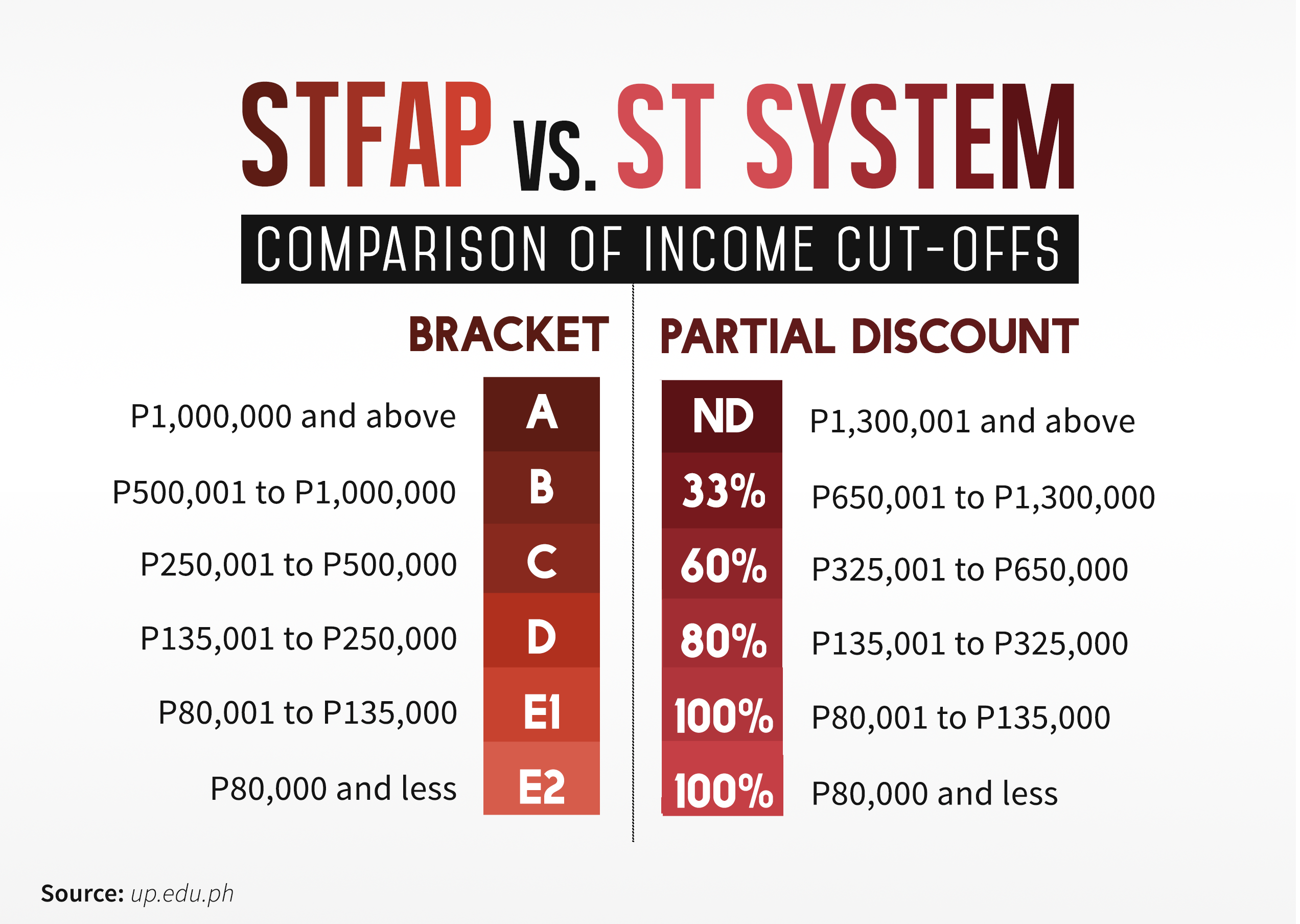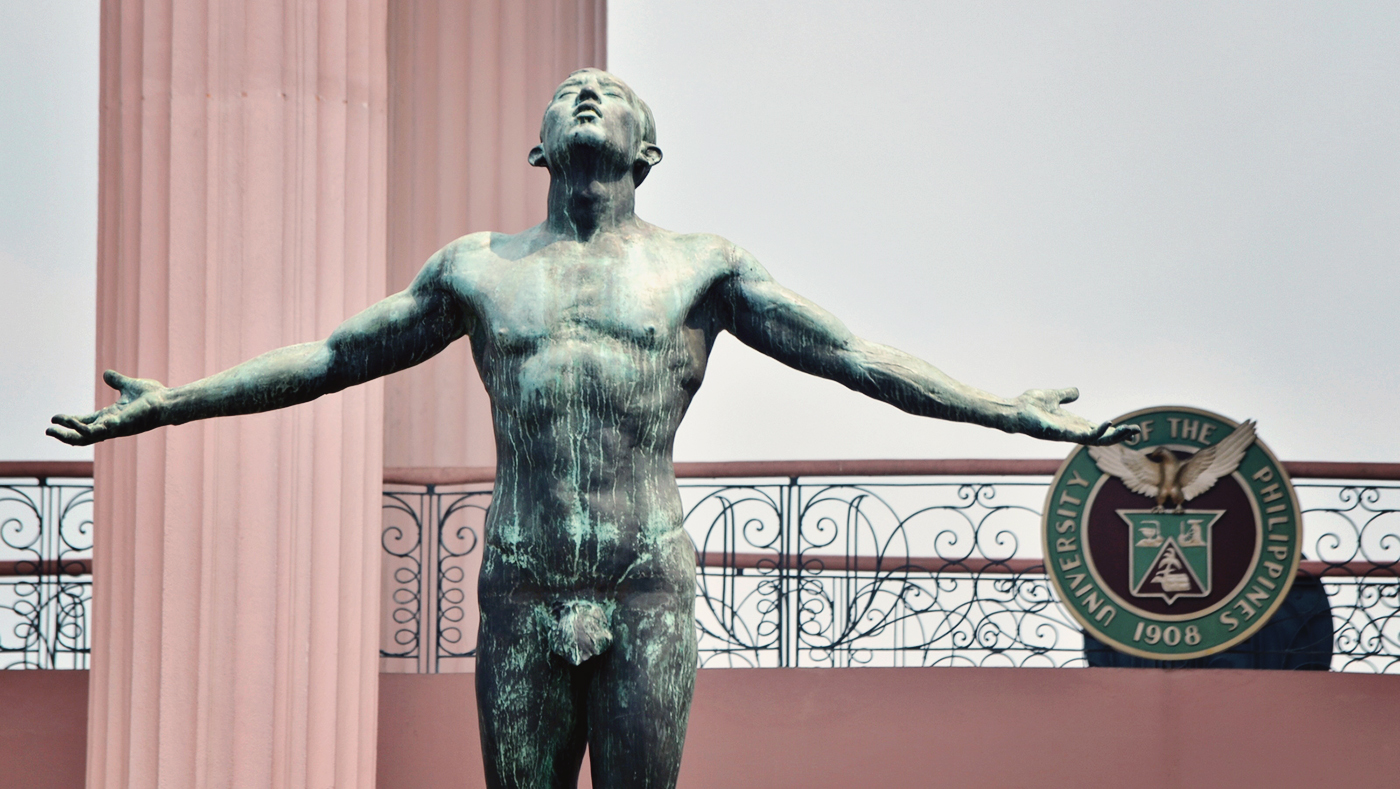BY JOHN REMIL ISAGA
As students of the University of the Philippines System campaigned against the 24-year-old Socialized Tuition and Financial Assistance Program (STFAP), the UP Administration acted upon the issue by revising the tuition system and introducing another scheme in its place: the Socialized Tuition (ST) System.
The UP Board of Regents approved the ST System, on Dec. 13, 2013, effectively replacing the STFAP.
The revision of the decades-old system followed the tragic death of UP Manila student Kristel Tejada, who committed suicide due to depression allegedly triggered by her inability to pay her tuition fees.
STFAP was first implemented in 1989 to “democratize access” to UP education. This system assigned different tuition discounts to students based primarily on their family income.
However, the scheme was criticized because of having allegedly masked tuition fee increases in the past two decades. During the era of the STFAP, UP’s per-unit tuition fee increased from P12, to P40, to P200, to P300, to P1,000, and finally, to P1,500.
Calls for reform and even the abolition of the STFAP became stronger in the Tejada tragedy’s aftermath.
In response, UP President Alfredo E. Pascual reassured the UP community and the public in a press conference that “no student shall be denied access to UP education due to financial constraints.”
Pascual wanted to reform the previous tuition system by simplifying the application and by providing an increased financial aid for students who cannot afford to pay in full.
Differences from the old system
In this new system, the first four income brackets were raised to allow more students to enjoy higher discounts. Also, added monthly stipend enjoyed by Bracket E beneficiaries were increased from P2,400 to P3,500 a month.
The discount to be given to a student is determined by the student’s answers to a survey made by the Office of Scholarships and Student Services (OSSS), which measures a student’s financial capabilities. Some of the questions include knowing how many television sets or air-conditioning units are owned by the family, among other indicators. The family’s combined gross income is also asked near the end of the survey.

#BracketAKaNa trends worldwide
However, the new system gained mixed reactions from the student body. Most of the negative reactions surfaced when the first batch of ST System results were released. A large number of students were given no tuition discounts, equivalent to being in the Bracket A in the former STFAP.
More than 7,000 out of 18,000 undergraduate students in UP Diliman would pay the full tuition rate for the first semester. This is the highest number of students without tuition discounts since the 400 percent tuition increase in 2007, according a Philippine Collegian report. Also, an additional 1,745 students were given no discounts for failing to apply through the system’s online form.
In response, many voiced out their complaints on social media. The hashtag #BracketAKaNa became a worldwide trending topic on Twitter, where netizens took the opportunity to add humorous tweets amid the furious outbursts.
According to ST System Director Richard Gonzalo, a to 4,310 out of 38,539 applicants filed appeals for higher discount.
UP still the most expensive SUC
Out of 111 state universities and colleges, UP is charging the highest tuition, according to a study submitted to the UP Administration.
Bracket A students have to pay P1,500 per unit, which is 11.54 times what a student pays at Central Luzon State University, 15 times what a student pays at Mindanao State University and 125 times what a student pays at Polytechnic University of the Philippines.
Bracket E1 and E2 grantees, meanwhile, remain a slim minority at 6 percent and 1 percent of the student population, respectively in UPLB, and less than 5 percent in UP Diliman, UP Baguio, UP Mindanao for E1 and E2 combined.
ST System strengthened by government policy
This socialized tuition system implemented in UP is actually strengthened and proliferated by government policy.
Part of the Roadmap for Public Higher Education Reform (RPHER)’s objectives include “rationalizing resource utilization and maximizing resource generation by state colleges and universities (SUCs).” The socialized tuition fee scheme, among others, is a means of resource generation.
Also, the socialized tuition scheme is a part of the government’s aim to make SUCs more “self-sufficient.” In 2011, the government has decided to prioritize basic education and has reduced the budget allocated for SUCs.
“We are gradually reducing the subsidy to SUCs to push them toward becoming self-sufficient and financially independent, given their ability to raise their income and to utilize it for their programs and projects,” President Aquino said in his budget speech.
A document-free system
Students have questioned the legitimacy of the ST System application form, in which it is stated that no documents are necessary to verify the students’ input, leading to speculations that the system could easily be fooled by simply entering the wrong data.
On the other hand, a respondent in a survey conducted by the UP Journalism Club said the document-free system was convenient because it allowed the family of the respondent to apply for a discount without having to deliver documents from abroad. This requirement in the former system discouraged them from applying before.
Meanwhile, another respondent found the application questions intrusive, asking whether knowing what kind of toilet one’s household had was even necessary.
Some UP student organizations have also expressed their curiosity about this new tuition system’s methodology.
Calling for transparency, UP Alyansa ng mga Mag-aaral para sa Panlipunang Katwiran at Kaunlaran (UP ALYANSA) sent letters to the offices of the UP President, Vice Chancellor, chairperson of the Diliman Committee on Scholarships and Financial Assistance, and the director of the ST System on July 2. The group urged the administration to send out information about the processing of applications in this new tuition system, including how many students have been classified into each bracket and the mechanism for appeals.
Calls for scrapping still widespread
Student organizations also united in calling for the scrapping of the ST System, claiming that the system was just a rehash of the old STFAP policies which failed to curb the alleged commercialization of UP education. Higher state subsidy, according to them, was still the solution.
In their Facebook post, Student Alliance for the Advancement of Democratic Rights in UP (STAND UP), the largest political organization in UP Diliman, described ST System as a “barefaced mechanism for tuition increase” and called out to junk the ST System and to rollback the tuition.
Also, UP Nagkakaisang Iskolar para sa Pamantasan at Sambayanan (UP KAISA) said in their official ST System statement that although the new system was more convenient, it is just like its predecessor, STFAP, in terms of income-generation from students.
“While making the process easier by employing an online system of application and by simplifying the questionnaire involved, we are of the belief that the system only improved modestly in terms of assessing the financial capacity of students as proven by the continued existence of surprising mismatches in bracket assignments,” the statement said.
In a Philippine Collegian report, Student Regent Neill Macuha said in Filipino, “STFAP and STS fool the students to pay high tuition fees. We should call for the abolition of these schemes and stand for accessible tuition fee, if not free, for all.”
This, according to former Student Regent Krista Melgarejo, is a testament to UP no longer being the “university of the people.” “[Its tuition] is on the same level as those of private universities,” Melgarejo said in Filipino in a Tinig ng Plaridel report. — with reports from Faith Esther Brown and Anne Guiang
